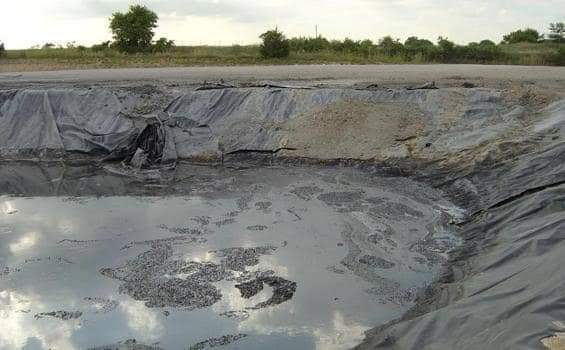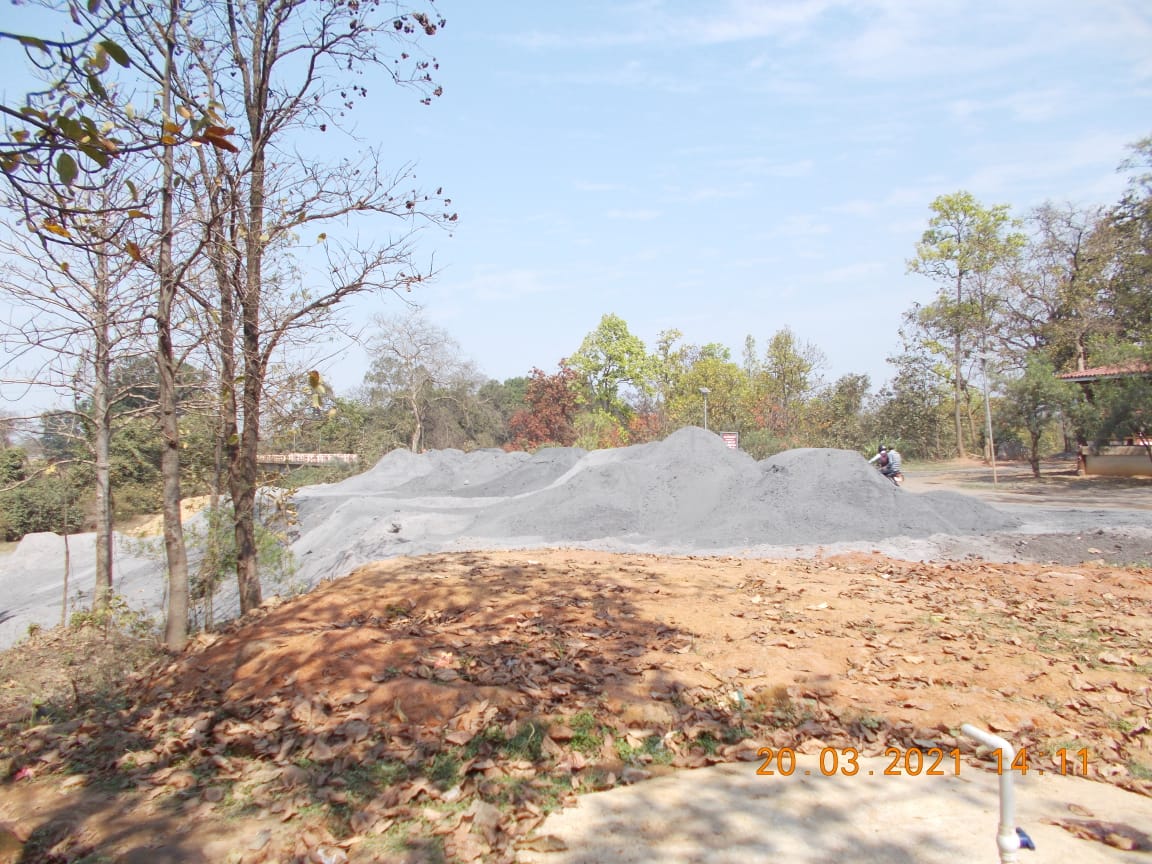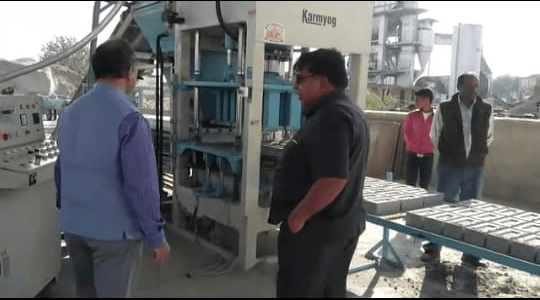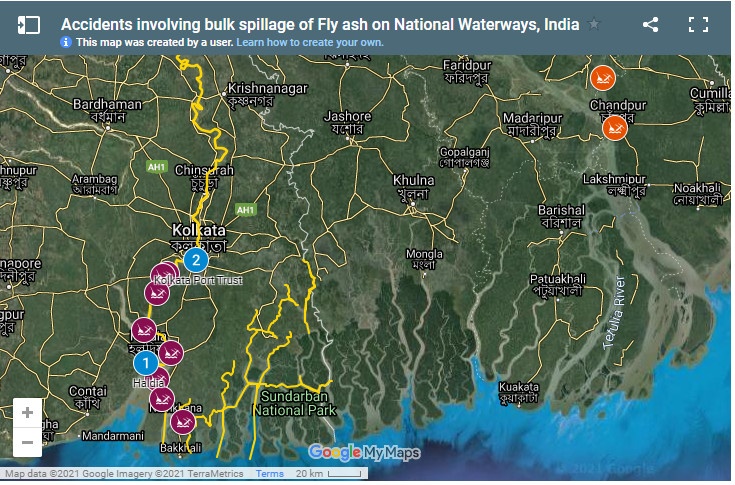On 11th April last year, residents of Madhya Pradesh’s Sasan saw their worst fears come true. Located in the state’s power hub of Singrauli district, this village was swamped by dark, thick slush forcefully flowing into homes and agricultural fields—eventually killing six people, including three children. The culprit was the Reliance Power Ultra Mega Power Project’s ‘fly ash dyke’—an artificial pond for thermal companies to dispose of the powdery by-product of burning coal. The fly ash dyke had collapsed. And so, a slurry composed of all 48 elements that the Ministry of Environment, Forests and Climate Change (MoEFCC) has reported fly ash to consist of—including radioactive elements and toxic metals—began flowing through people’s homes and fields.
Just received very disturbing images of another #ashpond breach at a #coal based power plant, this time it’s #Sasan UMPP (Ultra Mega Power Plant) in #Singrauli, #MadhyaPradesh. @mankabTOI @vishwamTOI @jayashreenandi @BhaskerTripathi @hridayeshjoshi @sudvaradhan @anupam_toko pic.twitter.com/DELmtj8HIu
— Sunil Dahiya (@Sunil_S_Dahiya) April 10, 2020
While the cause for the breaching of such fly ash dykes differs from case to case, overburdening their capacities with excessive fly ash deposits is a common one. This seems likely in India—in the last decade, 35% of fly ash generated by coal thermal plants has remained unutilised, and is often dumped into such ponds. In Sasan, the residents had raised the alarm of this disaster waiting-to-happen six months prior to the accident.
Last week, the MoEFCC released an amended draft notification on fly ash utilisation, that holds coal and lignite-based thermal power plants responsible for 100% utilisation of fly ash in an “eco-friendly manner,” through measures like making fly ash bricks or using it in road construction, amongst other suggestions. These thermal plants must use over 80% of the fly ash that they generate each year, the notification mandates.
This notification is the newest addition to five amendments made to this notification, which was first published in 1999. But, this time, the draft introduces a probable game changer—for the first time, the Ministry has integrated the ‘polluter’s pay principle’ in the notification itself, setting a fine of ₹1,000/tonne for coal and lignite thermal plants that do not comply with utilisation targets. This amendment comes at a time when 50% of India’s thermal power plants fail to meet 100% utilisation targets even today.
“The strength of this amendment is that it very explicitly makes [utilising] fly ash a responsibility of the thermal power plants. But, it’s difficult to say if fines can ensure this responsibility, especially since the penalty is miniscule compared to the huge annual turnovers that thermal power plants make,” notes Shripad Dharmadhikary, who is associated with the Manthan Adhyayan Kendra, a research organisation working on energy and water issues. This is one of the many limitations of the notification that he and his team are flagging as they prepare their comments to submit to the Ministry.
The fly ash notification has been around for over two decades. While the 2021 amendment makes some notable changes, many of the threats to the environment and health that untreated fly ash presents remain unaddressed.
Can Penalties Fix it All?
Fly ash travels across geographies; a thermal plant in Odisha might send its fly ash to southern states to be utilised in construction industries. “In this case, monitoring fly ash compliances is difficult. Short staffed and plagued with timelags, the government committees put in place for monitoring are not designed to implement such fines,” says Kanchi Kohli, a Senior Researcher with the Centre for Policy Research. “Articulation of the fine in the notification does not guarantee its implementation.”
There is also a loophole in the notification when it comes to penalties. It reads, “In case a thermal power plant achieves the ash utilisation (…) after imposition of fine in subsequent cycles, the said amount shall be returned to them after deducting 10% of the fine collected on the unutilised quantity.” To simplify, a plant that does not utilise its fly ash within a three year period gets fined. But, if it does utilise it in the one year extension given to the plant, the fine will be reimbursed to them with some deduction. “But, what about all the environmental and health damages of having that toxic fly ash being disposed unscientifically for three years?” asks Dharmadhikary. “These costs do not get accounted for. While it’s the MoEFCC that released this notification, we find it very disconnected from the environmental aspects of fly ash [utilisation].”

The notification also targets the problem of legacy ash—or unutilised ash that has accumulated over the years—albeit, with a caveat. It states that where “ash ponds have stabilised [sic] and reclamation taken [sic] place through green belt/plantation [around the dyke],” legacy ash does not need to be utilised.
Most of the coal India uses is low grade, and thus has a high ash content of 35-40%. Much of this fly ash has been lying around for at least a few decades, accumulating to 1.6 billion tonnes of legacy ash. “But what is the definition of ‘stabilised’? This lack of clarity is dangerous, since most of the older ponds have plantations [surrounding them], but not the protective lining. [As a result] Massive amounts of legacy ash are continuously seeping into the ground and polluting resources, but the Ministry might not even recognise that as a non-compliance,” asserts Dharmadhikary.
An official from the National Thermal Power Corporation (NTPC), who wishes to remain anonymous, tells us that penalties cannot be the cure. “Instead, those thermal plants and other agencies that are utilising the fly ash should be given financial incentives like subsidies,” he says. Some states have done exactly this; last year, the government of Odisha extended financial incentives of almost ₹70 crores to over 270 MSMEs, including fly ash.
Apart from ponds, fly ash is also being dumped into mining voids—hollowed out rocks or ground caused due to mining activities—or in low lying areas. Invariably, its toxic elements find ways into the lives of those who live in close proximity to these plants; it’s in the air that they breathe, the water they drink, and even in the food they eat. Can the draft notification change this state of affairs?
People are Living With Fly Ash, and the Notification Does Not Change That
“There is an engineering college that runs inside the power plant. Can you imagine what polluted air they must be breathing?” asks Savita Rath, a human rights activist and lawyer working in Chhattisgarh’s Raigarh. She is referring to the Jindal Mega Thermal Plant, one of many such thermal plants in this district.
A 2020 study reiterates Rath’s concerns. Chhattisgarh’s State Health Resource Centre noted that in the neighbouring district of Korba, residents were suffering from a “significantly elevated” prevalence of asthma and bronchitis. Alarmingly, the study proved how vulnerable this makes residents here to COVID-19, since the disease attacks the locals’ already weakened respiratory system. It is not surprising then, that Raigarh, a hub of thermal power plants, is home to the highest number of COVID-19 cases in the state today.

There are environmental concerns about fly ash dumping too. In 2014, researchers from Manthan observed that in the 630 MW North Chennai Thermal Plant, ash slurry was leaking out of ash ponds in “copious amounts” in the absence of any protection lining. This was dangerous—the slurry entered the local water system through a stream, ultimately contaminating the Kosasthalaiyar river, which is one of the three major rivers that flow through Chennai, a capital city which houses over 70 lakh people. In fact, the numerous thermal plants here have led to a “high concentration” of heavy metal in the Ennore Creek, which also connects to the same river. Rath informs The Bastion of something similar taking place in Raigarh, Chhattisgarh. Thermal plants were filling mining voids with ash. “But, the groundwater in the void was connected to a stream that flowed into Mahanadi river. So, the entire river was being contaminated with toxic fly ash,” she says.

This legacy fly ash which is mostly found in ponds is a challenge for the NTPC as well. An official informs The Bastion that “upon mixing with water, this ash in the ponds loses its reactivity [fly ash has reactive elements which give it cementitious properties; but, lime reactivity has been found to be more in dry fly ash, as compared to the fly ash slurry disposed of in ponds.] But, we at NTPC are currently in the process of developing technology in our labs to efficiently manage legacy fly ash. In Delhi’s [now defunct] Badarpur plant, for example, fly ash has remained unutilised for 20-25 years. Here, the NTPC is planning to build an eco park using the ash in the ponds.”
Now, here is the catch. Regardless of whether a thermal plant uses ash to fill up a low lying area or a mining void, the draft notification encourages these steps, and lists them under “eco-friendly purposes” to utilise fly ash. “Any measure where fly ash is not bound and can leach, like it often happens in the case of filling mining voids and ash ponds, cannot be termed as an eco-friendly way of utilising it,” says Dharmadhikary. “In the United States, for example, they make a distinction between the beneficial end use of fly ash and its disposal. In the various versions of the notification in India, dumping, or the disposal of fly ash, also falls under ‘utilisation’.”
Avinash Pareek, Secretary of the Fly Ash Bricks Manufacturers Association (FBMA) gives an example of eco-friendly utilisation of fly ash in its true sense. “We use fly ash as raw material to make bricks. In the process, the ash loses its toxicity to create a high value product.” Pareek has been operating a brick unit near the Uttar Pradesh-Delhi border for the last 22 years. An eco-friendly alternative to red bricks, these grey fly ash bricks make use of fly ash mixed with lime, gypsum, and cement. Unlike their red counterparts, these do not use topsoil or require the polluting firing process.
But, even though the notification has strongly recommended creating fly ash bricks and tiles since 1999, only 7% of the fly ash generated got utilised for this purpose between 2010 and 2019. Why is this industry dragging its feet and can the new amendment help?
Fly Ash Bricks: A Priority Recommendation, but an Ignored Enterprise
“Thermal plants do not have the adequate infrastructure to load and unload trucks of fly ash every day or transport them to our factories,” says Pankaj Mittal, who has been operating a fly ash brick factory in Noida since 2016. Today, Mr Mittal’s factory remains under-used — while his machines have the capacity to make 50,000 bricks in one eight hour shift, in the absence of a continuous supply of fly ash, they are producing only about 10,000 bricks in the same time. Because of this, he has to work on a “project-basis,” manufacturing them according to specific client demands that come his way. Mr Mittal has supplied bricks for various infrastructure projects around Delhi NCR.
The transport costs borne by thermal plants deter them from sending fly ash to be utilised by various construction agencies. “Then, to keep our factories running, we send our trucks, incurring our own costs to bring the fly ash from the plants. This hurts our already small industry,” Pareek adds. The fly ash brick industry falls under a “small” scale industry, that is, its annual turnover is not more than ₹50 crore.
These costs are levied upon the brick manufacturers despite previous versions of the notifications making it clear that if a factory is within 100 kilometres of a thermal plant, then the transportation costs have to be borne by the thermal plant itself.

Moreover, the brick industry also competes with the stronger cement industry to acquire fly ash. Fly ash is usually added to cement to enhance the strength and durability of concrete. Between 2010 and 2019, the cement industry used almost 390 million tonnes of fly ash to make cement, making it the highest user of fly ash. “The stronger cement industry can pay higher prices to buy the raw material. How can we compete with them?” Mittal questions.
What impacts this industry further is that 30 lakh metric tonnes of fly ash are also exported to Bangladesh, which accounts for 97% of the trade along the IndoBangladesh Protocol route. “We are sending our raw material to make value-added projects across the borders, when we can [instead] add value to it here and contribute to our economy,” Mittal says.

Towards creating a supportive ecosystem for this brick industry, some states like Madhya Pradesh and Bihar have made it compulsory to use only fly-ash bricks for all government buildings and construction. In fact, previous notifications also mandated construction agencies within 300 kilometres of thermal power plants to only use fly ash-based products. “Despite these mandates, we have not benefited. All we are asking is for thermal plants to comply with the previous promises and notifications that the government has sanctioned,” Pareek says.
As of March this year, 54% of the country’s installed capacity of power was run by coal and lignite power plants. For upcoming coal and lignite plants, this share will remain the same.It is very clear then, that coal is here to stay, and so is fly ash. The question now is of how we manage it. But for Kanchi Kohli, it makes better sense to ask a different question. “Instead of management, we need to have more focus on the generation of fly ash. Thermal plants often underplay the amount of ash they generate to show that they are complying [with the law], or to get environmental clearances. This calls for a rectification of our pre-clearance mechanism,” she says.
While braiding the polluter’s pay principle into the notification has been a novel step, a history of weak monitoring by pollution control boards, lack of integration of health and environmental impacts, and the concerns of a fly ash brick industry that is just about managing to keep itself afloat, seem to be weighing heavier. Without a different approach to the notification and stronger compliances, fly ash accidents like the one in Sasan might not be the last.
Featured image courtesy of Savita Rath.






[…] period. Relaxed parameters and extended deadlines to meet emission standards and fly ash utilisation goals for thermal power plants and coal auctions and mining reforms are some of […]
[…] for instance, fly-ash accidents that occur along the inland Indo-Bangladesh Protocol Route. 97 percent of the trade along this […]
[…] the knife in this period. Relaxed parameters and extended deadlines to meet emission standards and fly ash utilisation goals for thermal power plants and coal auctions and mining reforms are some of […]